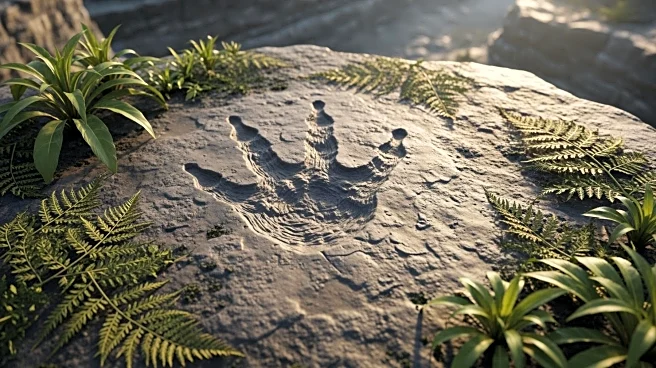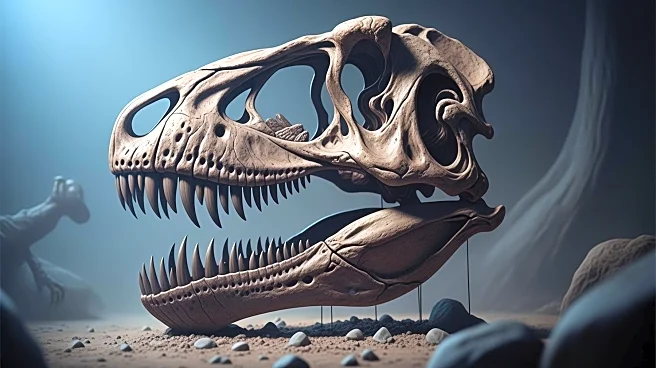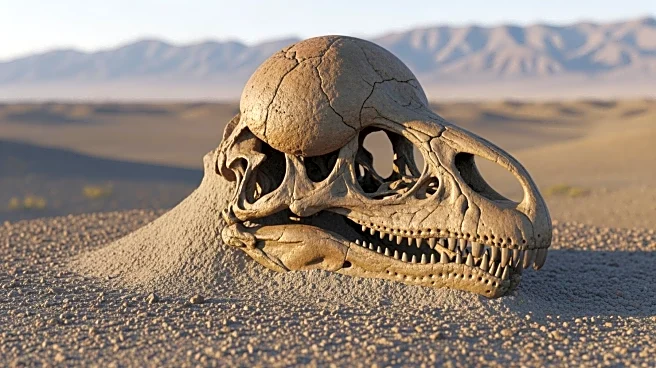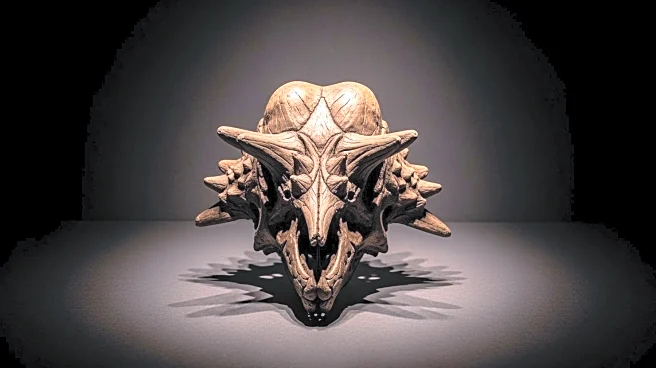What's Happening?
Researchers in Argentina have discovered a Carnian theropod with features previously thought to belong only to later neotheropods, suggesting greater early dinosaur diversity. The study, published in Nature
Ecology & Evolution, describes a new genus and species named Anteavis crurilongus, found in the Ischigualasto Formation. This discovery provides insights into the early diversification of dinosaurs during the Carnian pluvial episode. The fossil assemblages indicate a climate-related ebb and return of dinosaur abundance in northwestern Argentina, with the new theropod adding to the understanding of early dinosaur evolution.
Why It's Important?
This discovery is significant as it challenges previous assumptions about the timeline of dinosaur evolution, indicating that early dinosaurs were more diverse than previously thought. Understanding the early diversification of dinosaurs can provide insights into how these creatures adapted to changing climates and environments. This research also highlights the importance of fossil records in reconstructing the history of life on Earth, offering a glimpse into the evolutionary processes that shaped the diversity of life we see today.













